Most people have been asking, “do SSD come with SATA cables?” If you’re one of them, you’re not alone! It’s also not ignorance because you need cables to connect your drive to the motherboard.
You cannot store data on your computer without connecting the drive to the motherboard. Similarly, if you cannot store data or use the storage device, you cannot use the computer system.
The cable used to connect drives to the motherboard is called SATA (Serial Advanced Technology Attachment).
This post is all about solid-state drives and SATA cables. So keep reading to learn more!
SATA Cables Brief History
SATA cables have been around for over two decades, and the upgrades we have witnessed over the years have been mind-blowing. SATA was officially introduced in 2000 and it perfectly replaced the PATA (Parallel Advanced Technology Attachment) ribbon cables.
The PATA ribbon cables are designed based on parallel signaling technology, while the SATA cables are designed based on serial signaling technology.
The SATA, first introduced in 2000, has had several upgrades. It was revised in 2003, then 2004, and 2008. By the last upgrade, serial ATA was already in version three (III or 3.0).
The SATA 3.0 was a game-changer. It brought the features that storage device users craved. In other words, it was fast and offered reliable data storage. Unfortunately, its physical look suffered. There were speed improvements, but not in the connector’s physical appearance.
The SATA 3.0 still exists and it’s used in most systems, but over five revisions have been made since 2008. We now have SATA 3.1 up to 3.5.
Now, let’s consider the different revisions of the SATA cables. That is SATA 3.1 to 3.5.
The SATA 3.1:
The SATA 3.1 was released in July 2011, primarily focusing on boosting solid-state drive performance.
Host PCs were given the power to identify their hardware devices’ capacity and actual port that made USBs a possibility, which is the USM (Universal Storage Module).
The SATA 3.2:
The SATA 3.2 was released in 2013 and boasted up to 16 Gbit/s speed. Revision 3.2 ushered in several improvements that made SATA undeniably unique.
The improvements it brought include:
- Introducing USB port 3.0.
- Trimming down USM.
- Lowering power requirements of devices used constantly.
- Incorporating micro SSD to drastically reduce storage device sizes.
The SATA 3.3:
Revision 3.3 ushered in huge improvements that users craved. It was released in February 2016 and offered several improvements, such as capacity, reliability, and flexibility.
The SATA 3.3 features an activity indicator and startup options. It also features enhanced data center maintenance.
The SATA 3.4:
Released in June 2018, the SATA 3.4 features massive improvements, such as device condition monitoring and execution of housekeeping tasks, with less impact on performance.
It allows for device temperature monitoring, including device sleep signal timing.
The SATA 3.4 improves compatibility with manufacturers and writes vital cache data. The exciting thing is it can perform all these without compromising system performance.
The SATA 3.5:
The SATA 3.5 was released in 2020, including features enabling performance improvement. In addition, it also promotes SATA’s products and devices’ integration with other industry I/O standards. This revision was designed to lower latency, resulting in a performance increase.
So the SATA interfaces have seen massive improvements over the years. You can see the progress in revision 3.1 up to 3.5. The essence of these revisions is to meet the perceived needs of users and usher in new upgrades to the SATA interface to boost performance.
Another thing you must know is a couple of SATA interface alternatives have sprung up in the last couple of years. We have had the likes of mSATA released in 2011 for laptop drives.
The M.2 standard was the latest generation before the PCIe took over.
Does SSD Come With SATA Cables?
Well, it depends. Some sellers may include a SATA cable in the SSD package to attract buyers. However, most buyers don’t include these cables.
So if you purchase a solid-state drive but can’t find a SATA cable, don’t beat yourself up. In most cases, drives are sold without these cables.
On the other hand, SATA cables aren’t that expensive. So you can purchase one if you need it.
Does Motherboard Come With SATA Cables?
The answer to this is similar to the one we gave on the SSD question. SATA cables are essential and help with connecting drives to the motherboard. So it’s only proper for people to ask if a new motherboard must boast SATA cables.
The answer to this question is this. While most motherboards may come with SATA cables, some might not. High-end motherboards come with these cables.
Again, SATA cables aren’t that expensive. If you have managed to purchase a motherboard, you shouldn’t have a problem when it comes to buying a SATA cable.
So if your new motherboard doesn’t come with these cables, don’t beat yourself up. Instead, buy a brand new one, as they’re not expensive.
How To Identify SATA Cables
SATA cables won’t be the only cables you’ll find on your brand-new motherboard. The myriad of cables you’ll encounter can also make it challenging to identify the SATA cables.
How can you identify these cables? SATA cables are much longer and thinner when compared to traditional IDE cables. They can are around 1 meter long.
Another way to identify SATA cables is at the end portion. They have 7-pin connectors on each end.
How many SATA cables are available? Here is another question to ask. Two SATA cables exist.
- SATA Power cable
- SATA Data cable
The above are two SATA cables you would require to run a SATA drive.
- SATA Data cables:
The description we gave earlier fits the SATA Data cables. These cables are thin ribbon-like, and on each end, there are 7-pin connectors, which are identical.
The connector size is 1.5 x 0.4 cm and boasts an L-shaped notch for connection, which is distinguishable.
Another unique feature differentiating the SATA DATA cables is the 90 degrees angled connectors. You’ll find these connectors on some SATA data cables. Remember also that the angled connectors help solidify the connection to the motherboard.
You’ll most likely find SATA Data cables with the motherboard.
- SATA Power cables:
The SATA power cables are also very important. You need them to run the SATA drive. The SATA Power cables involve cables that originate from the power supply unit.
Other SATA Cables And Uses
We have mentioned the SATA Data and Power cables as the two cables you require to run a SATA drive. Below are other SATA cables and the thing they do.
- Micro SATA Cables:
These cables are useful for connecting tiny 1.8” form factor solid-state drives. However, they’re almost in the past now.
- e-SATA Cables:
These cables are useful for connecting SATA drives and competed against the USB interface in the past.
The Number Of SATA Cables You Require
As explained earlier, motherboards usually come with SATA cables. But if yours doesn’t, there’s no cause for alarm. You can purchase SATA cables, as they are readily available and cheap.
On new motherboards with SATA cables, you’ll find around two to five cables attached to the motherboard. However, the number of cables you’ll require depends on the number of drives you want to connect.
When connecting an SSD to the motherboard, you’ll need two cables. One is the data cable, while the other is the power cable. The drive uses the data cable to transfer data between it and the motherboard.
Must-Know SATA Cables Buying Tips
Here are things you should consider when buying SATA cables to make the right choice.
- Check the wire thickness before splashing the cash on a SATA cable. Avoid thin wires, as they may lead to data loss.
- Speed varies from SATA cable to another, so consider the speed before buying a SATA cable. The latest versions support speeds up to 6GB/s, while some may have speeds as low as 1.5 GB/s.
- The connectors should receive a compulsory check. Ensure they’re compatible with your device, including the power outlet.
- SATA cables come in varied price points, so compare prices of various cables to have the best deal.
Conclusion
Now you know the answer to the question, do SSD come with SATA cables? The thing is, most dealers attach SATA cables to solid-state drives as extras in the package. However, you may not find these cables in the solid-state drive you purchase.
SATA cables are a compulsory addition to high-end motherboards. But most low-end motherboards may not have these cables.
SATA cables aren’t expensive. So if you can’t find them in your solid-state drive’s package, you can purchase them separately. Just ensure you purchase compatible SATA cables for your device.


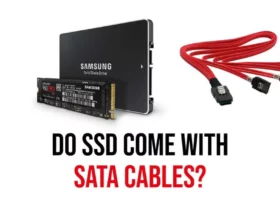
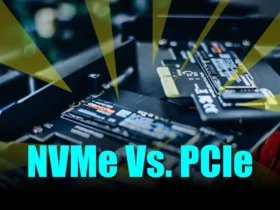
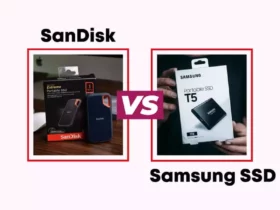
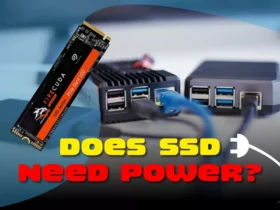
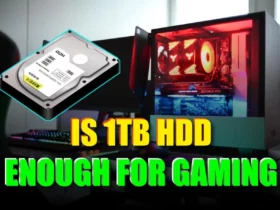
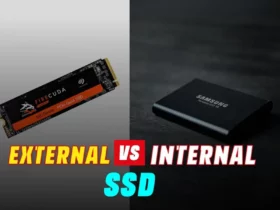
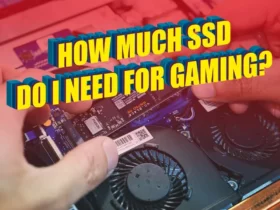

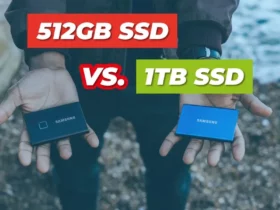




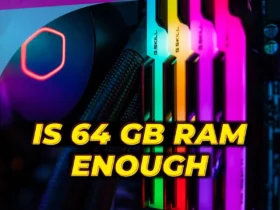
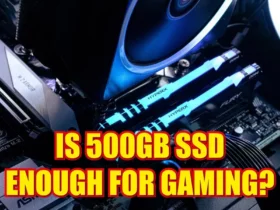
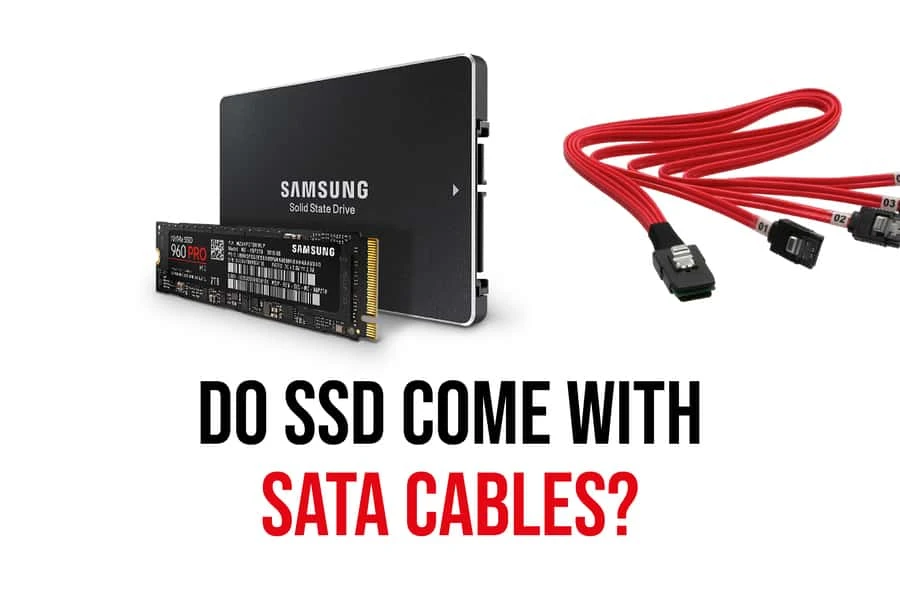
Leave a Reply